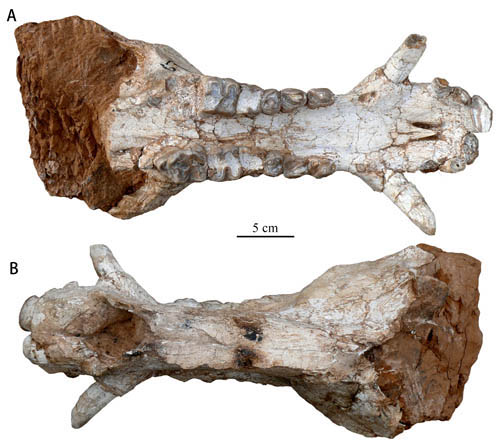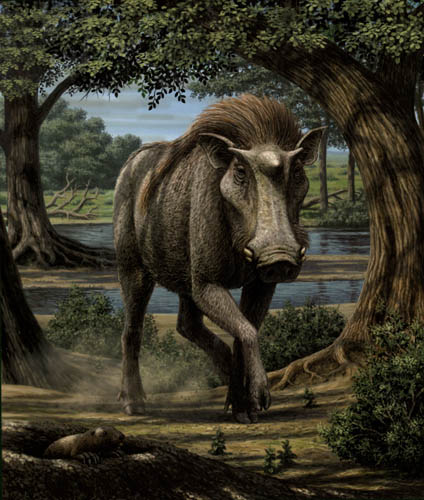Kuban pigs (kubanochoeres) are a type of huge pigs with hump-shaped teeth that once lived in the Old World. They were mainly distributed in the Early Miocene to Middle Miocene, and are found in Africa and Eurasia. For a long time, paleontologists have been debating whether the Cuban pig should be established as a subfamily-level taxon. There are also many problems with the classification and evolutionary relationships of Cuban pig fossils from different locations. Recently, Hou Sukuan and Deng Tao of the Institute of Vertebrate Paleontology and Paleoanthropology, Chinese Academy of Sciences, described a partially preserved skull fossil discovered in Hezheng County, Linxia Basin, Gansu Province, establishing a new species of the genus Kubansu, the small Kubanochoerus parvus sp. nov.), and systematically discussed the classification and evolution of Kubanochoe fossils. The relevant research results have been published online in Vertebrata PalAsiatica.
Based on the comparison of known Kubanochoerus fossils, Hou Sukuan and Deng Tao believed that the African Libycochoerus was a synonym of the Eurasian Kubanochoerus, and classified Eurasia as having frontal horns. The Cuban pig materials are classified into one species - K. gigas. It is believed that K. robustus and K. lantienensis are the same species of K. gigas. Synonyms, and they believe that there is insufficient evidence to support the classification of the Great Kuban pig at the subspecies level. The new Kuban pig material from the Linxia Basin is smaller, similar to K. massai in Africa and K. minheensis in Qinghai, China; its cheek teeth are wider, similar to K. massai; some progressive features such as enlarged central incisors, healed The premaxillary bone, the palatine bone that extends significantly posteriorly, and the long P1? P2/p1? The p2 tooth gap and so on are similar to K. gigas in Eurasia. The new species is roughly equivalent to the top of the Hujialiang Formation or the bottom of the Liushu Formation, and may be the last known Kuban pig fossil. K. gigas in Eurasia may have evolved from a more primitive type than K. massai; the new species may have evolved from K. massai or a more primitive type, representing a separate branch of the Cuban pig in Eurasia; K. minheensis maintains a smaller body size, but its teeth have a tendency to become subridged, representing another independent evolutionary branch of the Eurasian Kuban pig.
This research was funded by the National Natural Science Foundation of China, the Key Frontier Science Research Project of the Chinese Academy of Sciences, the Strategic Pilot Cultivation Project and the International Partnership Program.

Figure 1 Skull of Kubanochoerus parvus sp. nov. (HMV 1985), a new species of Kuban pig in Linxia Basin, holotype A. Ventral surface; B. Dorsal surface (Photo provided by Hou Sukuan)

Figure 2 Rehabilitation map of the Cuban pig (drawn by Mauricio Antón)
animal tags: evolution pig fossil
We created this article in conjunction with AI technology, then made sure it was fact-checked and edited by a Animals Top editor.